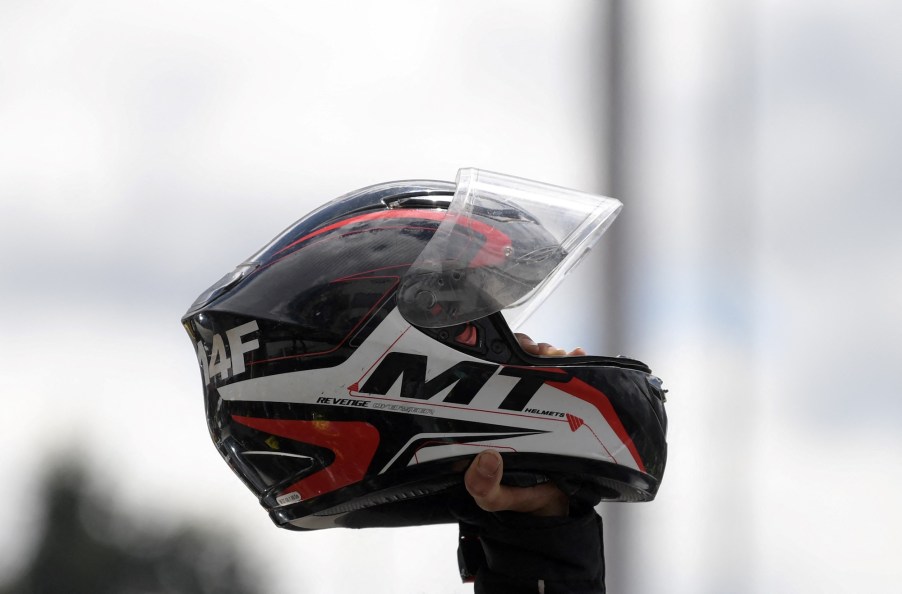
Steps to Be Sure Your Motorcycle Helmet Fits Just Right
Riding a motorcycle can be a lot of fun, and it has several health benefits which aren’t talked about enough. It can be dangerous, especially if you don’t have the right gear. It’s crucial to find a motorcycle helmet that fits you properly, so you can focus on having a good time while riding. But how exactly do you find the right one?
Ride safely

There’s a lot to be said for motorcycle safety. Its importance can’t be overstated, especially when you start to check the statistics, and realize how many accidents happen on a bike.
With that being said, not all motorcyclists are going to have a major accident. It’s certainly possible, and if it does happen, chances are it’s caused by someone in a car or larger vehicle who wasn’t looking.
This is why finding gear that properly fits your body is so essential. It can help protect you in case of an accident, so you can get back to riding sooner rather than later.
Helmets are not one size fits all
A lot of science goes into how a helmet works. The purpose of a helmet is to absorb the shock of impact if you should hit your head on the pavement. It’s called the impact-absorbing liner.
This is where the right fit comes into play, according to RevZilla. Your helmet needs to fit snugly enough that there isn’t a gap between your skull and the impact-absorbing liner. If there is, your head could end up playing a real-life version of ping pong with your helmet.
Don’t go too far the other way and get a helmet that is too tight. This will lead to other problems, like a miserable ride.
To find the right helmet, you need to measure your head with a soft measuring tape, which they’ll place over your eyebrows, and then reach around the widest part of the back of your skull.
You’ll also need to determine the shape of your head. This could be a round oval, intermediate oval, and long oval.
To figure this out, smooth your hair down as much as possible, and then have a someone take a picture of your head from above. If your head is totally round, then you’re a round oval. Thin and long means you’re a long oval. You’re probably an intermediate oval if you can’t figure it out.
Once you order your helmet, try it on. Wear it around the house, play outside, or cook a three-course meal. Just don’t jump on your bike first thing. You want to ensure the helmet feels comfortable for a decent amount of time before you begin to ride.
Safety ratings for motorcycle helmets
There are three major safety ratings for helmets: SNELL, ECE, and DOT.
The Department of Transportation determines what makes a safe helmet and what doesn’t for the U.S.. This involves drop tests onto two different anvils, penetration tests, and a retention test to ensure it stays firmly on your head in case of a crash. This certification is required for a helmet to be sold in the U.S.
Snell tests are a little more intensive than the DOT. These are run by the nonprofit Snell Memorial Foundation. They drop the helmet from higher heights onto five different anvils, test the top of the helmet and chin, and even shoot the visor with an air rifle.
The ECE is considered to be the safest of them all. The Economic Commission determines the tests in Europe. There’s no penetration test, and they only drop it onto one anvil, but there are plenty of other factors they consider.
This includes going over the various straps, abrasion resistance, checking out for deformation in the shell, and the visor. Each helmet has to have a DOT certification, but it’s totally up to you if you want the Snell or ECE certification.


